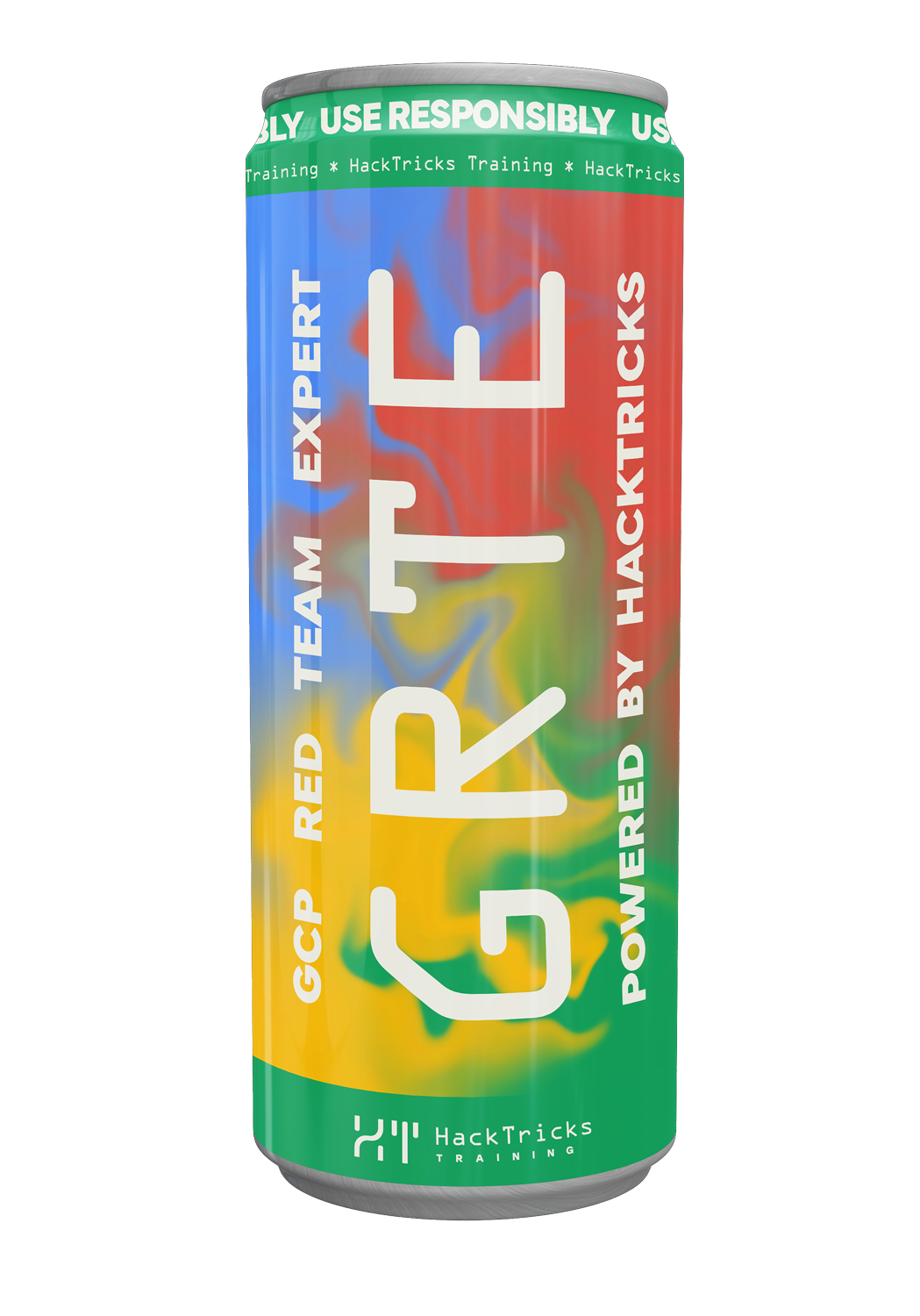Segurança do Supabase
Reading time: 11 minutes
tip
Aprenda e pratique Hacking AWS: HackTricks Training AWS Red Team Expert (ARTE)
HackTricks Training AWS Red Team Expert (ARTE)
Aprenda e pratique Hacking GCP:  HackTricks Training GCP Red Team Expert (GRTE)
HackTricks Training GCP Red Team Expert (GRTE) Aprenda e pratique Hacking Azure:
Aprenda e pratique Hacking Azure:  HackTricks Training Azure Red Team Expert (AzRTE)
HackTricks Training Azure Red Team Expert (AzRTE)
Support HackTricks
- Confira os planos de assinatura!
- Junte-se ao 💬 grupo do Discord ou ao grupo do telegram ou siga-nos no Twitter 🐦 @hacktricks_live.
- Compartilhe truques de hacking enviando PRs para o HackTricks e HackTricks Cloud repositórios do github.
Informações Básicas
As per their landing page: Supabase é uma alternativa open source ao Firebase. Inicie seu projeto com um banco Postgres, Authentication, instant APIs, Edge Functions, Realtime subscriptions, Storage, e Vector embeddings.
Subdomínio
Basicamente, quando um projeto é criado, o usuário receberá um subdomínio supabase.co como: jnanozjdybtpqgcwhdiz.supabase.co
Configuração do banco de dados
tip
This data can be accessed from a link like https://supabase.com/dashboard/project/<project-id>/settings/database
Esse banco de dados será implantado em alguma região AWS, e para se conectar a ele é possível conectar-se através de: postgres://postgres.jnanozjdybtpqgcwhdiz:[YOUR-PASSWORD]@aws-0-us-west-1.pooler.supabase.com:5432/postgres (isso foi criado em us-west-1).
A senha é uma senha que o usuário colocou previamente.
Portanto, como o subdomínio é conhecido e é usado como nome de usuário e as regiões AWS são limitadas, pode ser possível tentar brute force the password.
Esta seção também contém opções para:
- Redefinir a senha do banco de dados
- Configurar connection pooling
- Configurar SSL: Rejeitar conexões em plain-text (por padrão elas estão habilitadas)
- Configurar tamanho do disco
- Aplicar restrições e bans de rede
Configuração da API
tip
This data can be accessed from a link like https://supabase.com/dashboard/project/<project-id>/settings/api
A URL para acessar a API do supabase no seu projeto será algo como: https://jnanozjdybtpqgcwhdiz.supabase.co.
anon api keys
Também será gerada uma anon API key (role: "anon"), como: eyJhbGciOiJIUzI1NiIsInR5cCI6IkpXVCJ9.eyJpc3MiOiJzdXBhYmFzZSIsInJlZiI6ImpuYW5vemRyb2J0cHFnY3doZGl6Iiwicm9sZSI6ImFub24iLCJpYXQiOjE3MTQ5OTI3MTksImV4cCI6MjAzMDU2ODcxOX0.sRN0iMGM5J741pXav7UxeChyqBE9_Z-T0tLA9Zehvqk que a aplicação precisará usar para contatar a API exposta em nosso exemplo em
É possível encontrar a REST API para contatar essa API na docs, mas os endpoints mais interessantes seriam:
Signup (/auth/v1/signup)
``` POST /auth/v1/signup HTTP/2 Host: id.io.net Content-Length: 90 X-Client-Info: supabase-js-web/2.39.2 Sec-Ch-Ua: "Not-A.Brand";v="99", "Chromium";v="124" Sec-Ch-Ua-Mobile: ?0 Authorization: Bearer eyJhbGciOiJIUzI1NiIsInR5cCI6IkpXVCJ9.eyJpc3MiOiJzdXBhYmFzZSIsInJlZiI6ImpuYW5vemRyb2J0cHFnY3doZGl6Iiwicm9sZSI6ImFub24iLCJpYXQiOjE3MTQ5OTI3MTksImV4cCI6MjAzMDU2ODcxOX0.sRN0iMGM5J741pXav7UxeChyqBE9_Z-T0tLA9Zehvqk User-Agent: Mozilla/5.0 (Windows NT 10.0; Win64; x64) AppleWebKit/537.36 (KHTML, like Gecko) Chrome/124.0.6367.60 Safari/537.36 Content-Type: application/json;charset=UTF-8 Apikey: eyJhbGciOiJIUzI1NiIsInR5cCI6IkpXVCJ9.eyJpc3MiOiJzdXBhYmFzZSIsInJlZiI6ImpuYW5vemRyb2J0cHFnY3doZGl6Iiwicm9sZSI6ImFub24iLCJpYXQiOjE3MTQ5OTI3MTksImV4cCI6MjAzMDU2ODcxOX0.sRN0iMGM5J741pXav7UxeChyqBE9_Z-T0tLA9Zehvqk Sec-Ch-Ua-Platform: "macOS" Accept: */* Origin: https://cloud.io.net Sec-Fetch-Site: same-site Sec-Fetch-Mode: cors Sec-Fetch-Dest: empty Referer: https://cloud.io.net/ Accept-Encoding: gzip, deflate, br Accept-Language: en-GB,en-US;q=0.9,en;q=0.8 Priority: u=1, i{"email":"test@exmaple.com","password":"SomeCOmplexPwd239."}
</details>
<details>
<summary>Entrar (/auth/v1/token?grant_type=password)</summary>
POST /auth/v1/token?grant_type=password HTTP/2 Host: hypzbtgspjkludjcnjxl.supabase.co Content-Length: 80 X-Client-Info: supabase-js-web/2.39.2 Sec-Ch-Ua: "Not-A.Brand";v="99", "Chromium";v="124" Sec-Ch-Ua-Mobile: ?0 Authorization: Bearer eyJhbGciOiJIUzI1NiIsInR5cCI6IkpXVCJ9.eyJpc3MiOiJzdXBhYmFzZSIsInJlZiI6ImpuYW5vemRyb2J0cHFnY3doZGl6Iiwicm9sZSI6ImFub24iLCJpYXQiOjE3MTQ5OTI3MTksImV4cCI6MjAzMDU2ODcxOX0.sRN0iMGM5J741pXav7UxeChyqBE9_Z-T0tLA9Zehvqk User-Agent: Mozilla/5.0 (Windows NT 10.0; Win64; x64) AppleWebKit/537.36 (KHTML, like Gecko) Chrome/124.0.6367.60 Safari/537.36 Content-Type: application/json;charset=UTF-8 Apikey: eyJhbGciOiJIUzI1NiIsInR5cCI6IkpXVCJ9.eyJpc3MiOiJzdXBhYmFzZSIsInJlZiI6ImpuYW5vemRyb2J0cHFnY3doZGl6Iiwicm9sZSI6ImFub24iLCJpYXQiOjE3MTQ5OTI3MTksImV4cCI6MjAzMDU2ODcxOX0.sRN0iMGM5J741pXav7UxeChyqBE9_Z-T0tLA9Zehvqk Sec-Ch-Ua-Platform: "macOS" Accept: / Origin: https://cloud.io.net Sec-Fetch-Site: same-site Sec-Fetch-Mode: cors Sec-Fetch-Dest: empty Referer: https://cloud.io.net/ Accept-Encoding: gzip, deflate, br Accept-Language: en-GB,en-US;q=0.9,en;q=0.8 Priority: u=1, i
{"email":"test@exmaple.com","password":"SomeCOmplexPwd239."}
</details>
Então, sempre que você descobrir um cliente usando supabase com o subdomínio que lhe foi concedido (é possível que um subdomínio da empresa tenha um CNAME sobre o subdomínio supabase deles), você pode tentar **criar uma nova conta na plataforma usando a API do supabase**.
### secret / service_role api keys
Uma chave API secreta também será gerada com **`role: "service_role"`**. Essa chave API deve ser mantida em segredo porque será capaz de contornar o **Row Level Security**.
A chave API se parece com isto: `eyJhbGciOiJIUzI1NiIsInR5cCI6IkpXVCJ9.eyJpc3MiOiJzdXBhYmFzZSIsInJlZiI6ImpuYW5vemRyb2J0cHFnY3doZGl6Iiwicm9sZSI6InNlcnZpY2Vfcm9sZSIsImlhdCI6MTcxNDk5MjcxOSwiZXhwIjoyMDMwNTY4NzE5fQ.0a8fHGp3N_GiPq0y0dwfs06ywd-zhTwsm486Tha7354`
### JWT Secret
Um **Segredo JWT** também será gerado para que a aplicação possa **criar e assinar tokens JWT personalizados**.
## Authentication
### Signups
<div class="mdbook-alerts mdbook-alerts-tip">
<p class="mdbook-alerts-title">
<span class="mdbook-alerts-icon"></span>
tip
</p>
Por **padrão** o supabase permitirá que **novos usuários criem contas** no seu projeto usando os endpoints de API mencionados anteriormente.
</div>
No entanto, essas novas contas, por padrão, **precisarão validar seu endereço de email** para conseguir fazer login na conta. É possível habilitar **"Allow anonymous sign-ins"** para permitir que pessoas façam login sem verificar seu email. Isso pode conceder acesso a **dados inesperados** (eles recebem os papéis `public` e `authenticated`).\
Isso é uma péssima ideia porque o supabase cobra por usuário ativo, então pessoas poderiam criar usuários e fazer login e o supabase cobraria por esses:
<figure><img src="../images/image (1) (1) (1) (1) (1) (1).png" alt=""><figcaption></figcaption></figure>
#### Auth: Server-side signup enforcement
Esconder o botão de cadastro no frontend não é suficiente. Se o **Auth server ainda permite signups**, um atacante pode chamar a API diretamente com a `anon` key pública e criar usuários arbitrários.
Teste rápido (a partir de um cliente não autenticado):
<div class="codeblock_filename_container"><span class="codeblock_filename_inner hljs">bash</span></div>
```bash
curl -X POST \
-H "apikey: <SUPABASE_ANON_KEY>" \
-H "Authorization: Bearer <SUPABASE_ANON_KEY>" \
-H "Content-Type: application/json" \
-d '{"email":"attacker@example.com","password":"Sup3rStr0ng!"}' \
https://<PROJECT_REF>.supabase.co/auth/v1/signup
Endurecimento esperado:
- Desative cadastros por email/senha no Dashboard: Authentication → Providers → Email → Disable sign ups (invite-only), ou defina a configuração equivalente do GoTrue.
- Verifique que a API agora retorna 4xx para a chamada anterior e que nenhum novo usuário é criado.
- Se você depende de invites ou SSO, garanta que todos os outros providers estejam desativados, a menos que sejam explicitamente necessários.
RLS and Views: Write bypass via PostgREST
Using a Postgres VIEW to “hide” sensitive columns and exposing it via PostgREST can change how privileges are evaluated. In PostgreSQL:
- Ordinary views execute with the privileges of the view owner by default (definer semantics). In PG ≥15 you can opt into
security_invoker. - Row Level Security (RLS) applies on base tables. Table owners bypass RLS unless
FORCE ROW LEVEL SECURITYis set on the table. - Updatable views can accept INSERT/UPDATE/DELETE that are then applied to the base table. Without
WITH CHECK OPTION, writes that don’t match the view predicate may still succeed.
Padrão de risco observado no mundo real:
- A reduced-column view is exposed through Supabase REST and granted to
anon/authenticated. - PostgREST allows DML on the updatable view and the operation is evaluated with the view owner’s privileges, effectively bypassing the intended RLS policies on the base table.
- Result: low-privileged clients can mass-edit rows (e.g., profile bios/avatars) they should not be able to modify.
Illustrative write via view (attempted from a public client):
curl -X PATCH \
-H "apikey: <SUPABASE_ANON_KEY>" \
-H "Authorization: Bearer <SUPABASE_ANON_KEY>" \
-H "Content-Type: application/json" \
-H "Prefer: return=representation" \
-d '{"bio":"pwned","avatar_url":"https://i.example/pwn.png"}' \
"https://<PROJECT_REF>.supabase.co/rest/v1/users_view?id=eq.<victim_user_id>"
Hardening checklist for views and RLS:
- Prefer exposing base tables with explicit, least-privilege grants and precise RLS policies.
- If you must expose a view:
- Make it non-updatable (e.g., include expressions/joins) or deny
INSERT/UPDATE/DELETEon the view to all untrusted roles. - Enforce
ALTER VIEW <v> SET (security_invoker = on)so the invoker’s privileges are used instead of the owner’s. - On base tables, use
ALTER TABLE <t> FORCE ROW LEVEL SECURITY;so even owners are subject to RLS. - If allowing writes via an updatable view, add
WITH [LOCAL|CASCADED] CHECK OPTIONand complementary RLS on base tables to ensure only allowed rows can be written/changed. - In Supabase, avoid granting
anon/authenticatedany write privileges on views unless you have verified end-to-end behavior with tests.
Detection tip:
- From
anonand anauthenticatedtest user, attempt all CRUD operations against every exposed table/view. Any successful write where you expected denial indicates a misconfiguration.
Sondagem CRUD via OpenAPI a partir das roles anon/auth
PostgREST exposes an OpenAPI document that you can use to enumerate all REST resources, then automatically probe allowed operations from low-privileged roles.
Recupere o OpenAPI (works with the public anon key):
curl -s https://<PROJECT_REF>.supabase.co/rest/v1/ \
-H "apikey: <SUPABASE_ANON_KEY>" \
-H "Authorization: Bearer <SUPABASE_ANON_KEY>" \
-H "Accept: application/openapi+json" | jq '.paths | keys[]'
Padrão de sondagem (exemplos):
- Ler um único registro (esperar 401/403/200 dependendo do RLS):
curl -s "https://<PROJECT_REF>.supabase.co/rest/v1/<table>?select=*&limit=1" \
-H "apikey: <SUPABASE_ANON_KEY>" \
-H "Authorization: Bearer <SUPABASE_ANON_KEY>"
- Teste se UPDATE está bloqueado (use um filtro inexistente para evitar alterar dados durante os testes):
curl -i -X PATCH \
-H "apikey: <SUPABASE_ANON_KEY>" \
-H "Authorization: Bearer <SUPABASE_ANON_KEY>" \
-H "Content-Type: application/json" \
-H "Prefer: return=minimal" \
-d '{"__probe":true}' \
"https://<PROJECT_REF>.supabase.co/rest/v1/<table_or_view>?id=eq.00000000-0000-0000-0000-000000000000"
- Teste INSERT está bloqueado:
curl -i -X POST \
-H "apikey: <SUPABASE_ANON_KEY>" \
-H "Authorization: Bearer <SUPABASE_ANON_KEY>" \
-H "Content-Type: application/json" \
-H "Prefer: return=minimal" \
-d '{"__probe":true}' \
"https://<PROJECT_REF>.supabase.co/rest/v1/<table_or_view>"
- Testar se DELETE está bloqueado:
curl -i -X DELETE \
-H "apikey: <SUPABASE_ANON_KEY>" \
-H "Authorization: Bearer <SUPABASE_ANON_KEY>" \
"https://<PROJECT_REF>.supabase.co/rest/v1/<table_or_view>?id=eq.00000000-0000-0000-0000-000000000000"
Recommendations:
- Automatize as sondagens anteriores para tanto
anonquanto um usuário minimamenteauthenticatede integre-as no CI para detectar regressões. - Trate every exposed table/view/function como uma superfície de primeira classe. Don’t assume uma view “inherits” the same RLS posture as its base tables.
Passwords & sessions
É possível indicar o tamanho mínimo da senha (por padrão), requisitos (nenhum por padrão) e proibir o uso de leaked passwords.
Recomenda-se melhorar os requisitos, pois os padrões são fracos.
- User Sessions: É possível configurar como as user sessions funcionam (timeouts, 1 session per user...)
- Bot and Abuse Protection: É possível habilitar Captcha.
SMTP Settings
É possível configurar um SMTP para enviar e-mails.
Advanced Settings
- Definir tempo de expiração para access tokens (3600 por padrão)
- Configurar para detectar e revogar refresh tokens potencialmente comprometidos e timeout
- MFA: Indicar quantos fatores MFA podem ser registrados ao mesmo tempo por usuário (10 por padrão)
- Max Direct Database Connections: Número máximo de conexões diretas usadas para autenticação (10 por padrão)
- Max Request Duration: Tempo máximo permitido para uma requisição de Auth durar (10s por padrão)
Storage
tip
Supabase permite armazenar arquivos e torná-los acessíveis por meio de uma URL (usa S3 buckets).
- Defina o limite de tamanho de arquivo para upload (padrão 50MB)
- A conexão S3 é fornecida com uma URL como:
https://jnanozjdybtpqgcwhdiz.supabase.co/storage/v1/s3 - É possível solicitar S3 access key que são formadas por um
access key ID(e.g.a37d96544d82ba90057e0e06131d0a7b) e umsecret access key(e.g.58420818223133077c2cec6712a4f909aec93b4daeedae205aa8e30d5a860628)
Edge Functions
Também é possível armazenar segredos no supabase que serão acessíveis por edge functions (eles podem ser criados e deletados pela web, mas não é possível acessar seus valores diretamente).
References
- Building Hacker Communities: Bug Bounty Village, getDisclosed’s Supabase Misconfig, and the LHE Squad (Ep. 133) – YouTube
- Critical Thinking Podcast – Episode 133 page
- Supabase: Row Level Security (RLS)
- PostgreSQL: Row Security Policies
- PostgreSQL: CREATE VIEW (security_invoker, check option)
- PostgREST: OpenAPI documentation
tip
Aprenda e pratique Hacking AWS: HackTricks Training AWS Red Team Expert (ARTE)
HackTricks Training AWS Red Team Expert (ARTE)
Aprenda e pratique Hacking GCP:  HackTricks Training GCP Red Team Expert (GRTE)
HackTricks Training GCP Red Team Expert (GRTE) Aprenda e pratique Hacking Azure:
Aprenda e pratique Hacking Azure:  HackTricks Training Azure Red Team Expert (AzRTE)
HackTricks Training Azure Red Team Expert (AzRTE)
Support HackTricks
- Confira os planos de assinatura!
- Junte-se ao 💬 grupo do Discord ou ao grupo do telegram ou siga-nos no Twitter 🐦 @hacktricks_live.
- Compartilhe truques de hacking enviando PRs para o HackTricks e HackTricks Cloud repositórios do github.
 HackTricks Cloud
HackTricks Cloud